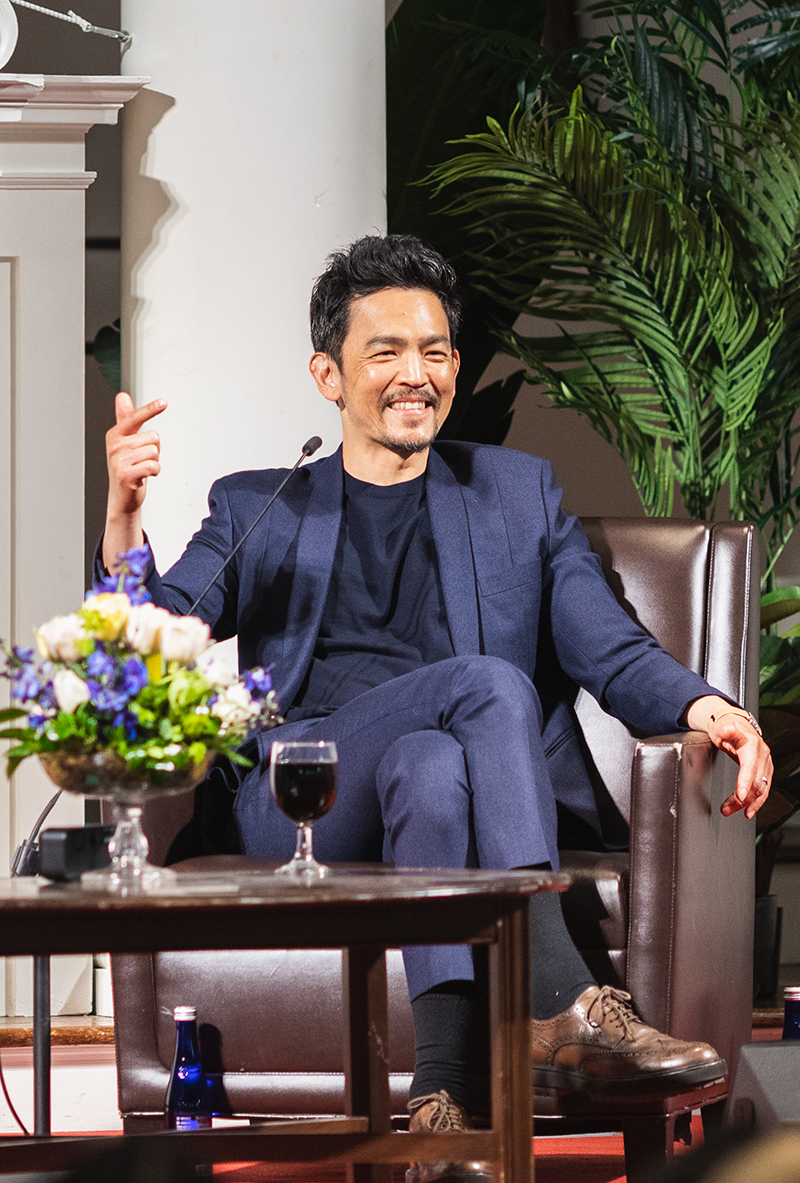When John Cho, whose many films include the Harold & Kumar franchise and the Star Trek reboot movies, was asked about his contribution to American culture as one of Hollywood’s first Korean American stars, he downplayed it at first.
But then he mentioned Garrett Morris.

“You learn to say, ‘It’s imperfect, but it works.’ People don’t come for perfection. They come to be entertained.”
Morris was the first Black cast member of Saturday Night Live. Cho said he’d recently learned that Morris was proud that, as the first, he created a chair that must be filled by a subsequent Black comedian every time the cast turns over.
Cho drew the analogy: “I think I helped create a space for Asian American men that wasn’t there before. When I was growing up, Asian American men were all considered other. I helped create an idea that Asian Americans could also be us. And that is an important distinction.”
That distinction, along with plenty of other insights and jokes, formed the April event “Breaking Barriers in Hollywood: A Conversation with John Cho” in Johnson Chapel. Speaking to a capacity crowd, Cho, a minister’s son, seemed amused by the venue itself, at one point deadpanning: “Please turn to page 506 in your hymnals.” His onstage conversation partner was Pawan Dhingra, associate provost and the Aliki Perroti and Seth Frank ’55 Professor of U.S. Immigration Studies. Dhingra is also president of the Association for Asian American Studies.
Cho grew up in Seoul and Los Angeles and went to UC Berkeley, where he got a B.A. in English literature. He then taught English in L.A. and started acting with the East West Players, which bills itself as “the nation’s premier Asian American Theatre.”
“When I was your age, in the 1990s, I literally didn’t think there were Asian American professional actors,” Cho told the mostly student audience. “It was such a rarity to see them in film and TV, so when I met them, it was a revelation.”
Dhingra asked Cho about his role as Harold in the 2004 stoner comedy Harold & Kumar Go to White Castle. “Asian American cinema, prior to that film, was catered toward white audiences,” said Cho. He cited stereotypes of the “model minority” and how industry types told him Asians weren’t funny. The Harold & Kumar films, he said, “actively resist those tropes.”
During the Q&A, a student wondered if Cho had regrets about past performances. Yes, often, he said. “I would love to shoot a whole movie and then do it again. It’s really difficult to get it right on the day. There are a certain number of takes; you’re losing light. But you also learn to say, ‘It’s imperfect, but it works.’ People don’t come for perfection. They come to be entertained. Perfection is you placing yourself at center.”
Another student brought up the tension of being treated as both not Korean enough and not American enough. Said Cho, “What else can I say except: You’re good the way you are. Something I’ve told actors may be a useful piece of advice in a broader sense: I spent my earlier years thinking, ‘How can I be of use to the entertainment industry?’ Now I think what you should do is be totally free and express yourself.”
Cho also had advice on the college experience: Learn expansively and take lots of humanities courses. “It’s b.s. that you go to college to learn widget-making skills to earn millions of bucks,” he told the audience. “I picked up a guitar for the first time in college, acted, fell in love, so many firsts. This time is a beautiful time.”
Photo: Jesse Gwilliam